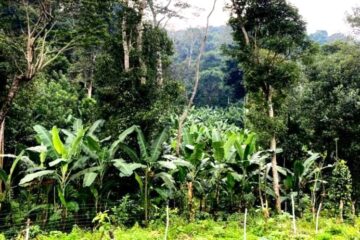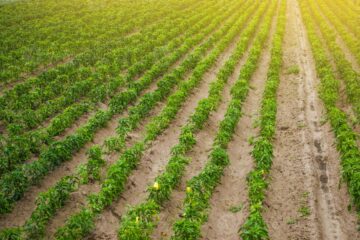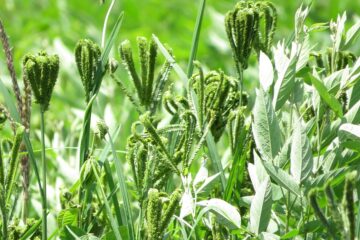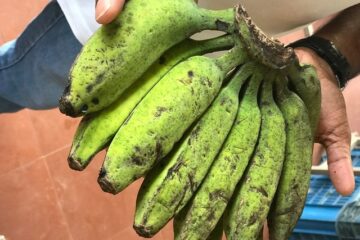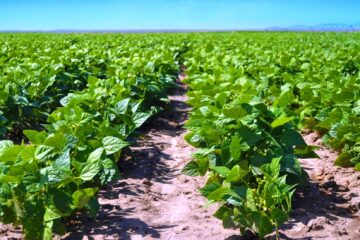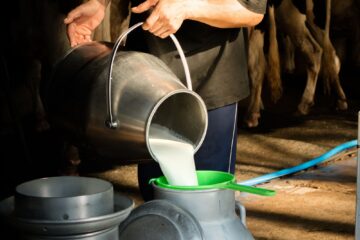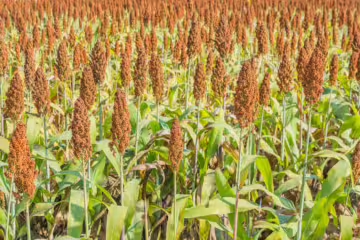The banana, one of the three major fruits, has been a staple in the human diet since ancient times. Native to the Asian continent, the banana is cultivated across tropical regions worldwide. Botanically known as Musa, it belongs to the family Musaceae. In India, bananas are a key food crop, with its fruit, leaves, flowers, stems, and raw bananas being used extensively. In fact, in terms of area cultivated, bananas rank second only to mangoes, but they take first place in production.
Among the various banana varieties, the Malai Vazhai (hill banana) is notable. It is called Malai Vazhai because it is grown in hilly regions. It thrives at altitudes ranging from 2,000 to 5,000 feet above sea level and in areas that receive around 1,500 mm of annual rainfall without strong winds. Fertile, well-drained soils are ideal for high yields. The hill banana is a perennial crop that is cultivated in temperate climates.
Characteristics of the Hill Banana
The stem of the hill banana is tall, thick, and often has black stripes with a coffee-colored tinge. The leaves are long, and the fruit has a yellow peel, which is thick and easy to remove. The hill banana is rich in nutrients, containing 22% carbohydrates, 1% protein, and 0.2% fat. Additionally, 100 grams of the fruit provides:
- 27 mg of phosphorus
- 460 mg of potassium
- 7 mg of calcium
- 36 mg of magnesium
- 34 mg of sulfur
- 0.04 mg of thiamine
- 0.07 mg of riboflavin
- 10 mg of vitamin C
The fruit can stay fresh for 7 to 10 days and is popular among people of all ages. Its aroma, flavor, and ease of consumption make it a favorite, and it is believed to relieve constipation if consumed regularly. Bananas are an essential part of religious offerings and rituals in Tamil Nadu and are also used to prepare Panchamirtham.
Varieties of Hill Bananas
- Viruppaachi
- A tall and thick-stemmed variety, growing up to 300 cm in height.
- Its leaves are long, and the stem has black streaks.
- The ripe fruit is yellow, fragrant, and easily peeled.
- It contains 0.56% acidity, has a TSS (Total Soluble Solids) level of 21 Brix, and can last up to 10 days without rotting.
- Nutritionally, 100 grams of Viruppaachi contains 22% carbohydrates, 460 mg of potassium, 36 mg of phosphorus, and 10 mg of vitamin C.
- Sirumalai
- The bunch has 11-14 fruits, which are easily detached from the bunch but not from the individual stalks.
- The sweetness of the fruit increases 7-10 days after harvest.
- This variety matures in 12-13 months, with the bunch weighing 15-25 kg, containing 8-10 clusters of about 80-100 fruits.
- Sevvazhai (Red Banana)
- Known by various names like Agneeswar, Lalkela, and Sengkathali, this variety has a red peel and is cultivated both in plains and hills.
- The fruit has a rich flavor and is resistant to some diseases, though it is prone to certain conditions like “bunchy top.”
- Grown primarily in Tamil Nadu’s Kanyakumari, Dindigul, and Salem districts.
- Karpooravalli
- Also known as Sambal Banana, this variety is grown for its fruit, leaves, and stem, and it is resistant to certain pests like stem borers.
- It is cultivated in both plains and hills, with better yields in the latter.
- The plant matures in 10-12 months, with the bunch weighing 25-35 kg and containing 150-180 fruits.
- Namaran
- A highly fragrant variety grown in regions like Kalrayan Hills, Pachamalai, and Kolli Hills, with bunches weighing 15-25 kg.
- It is prone to bunchy top disease and is suitable for cultivation at altitudes of 800-1000 meters.
- Sandal Banana
- Thought to be a mutation of the Red Banana, this variety has green fruits and a pleasant aroma.
- It is grown in Servarayan and Kolli Hills, maturing in 12-14 months, with the bunch weighing 20-25 kg and containing 60-75 fruits.
- NPH-02-01
- A hybrid variety similar to hill bananas, this strain is resistant to pests like the banana weevil and fungal diseases.
- Grown in the lower Palani Hills, it produces bunches weighing 19 kg with 213 fruits.
In Tamil Nadu, hill bananas are grown in regions like Sirumalai, Kolli Hills, Pachamalai, and the foothills of the Western Ghats. They are cultivated as a perennial crop, providing nutrition and sustenance year-round.
Dr. R. Jayavalli, Dr. R. Arul Mozhiyan, Dr. J. Suresh, Horticulture College and Research Station, Tiruchirappalli.




